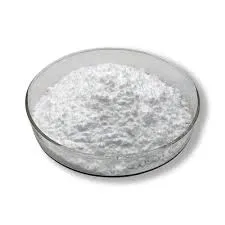
Nov . 06, 2024 18:00 Back to list
Applications and Benefits of Hydroxypropyl Methyl Cellulose in Modern Industries
Hydroxypropyl Methyl Cellulose An Overview
Hydroxypropyl Methyl Cellulose (HPMC) is a versatile cellulose derivative commonly used in various industries, including pharmaceuticals, food, construction, and cosmetics. This semi-synthetic compound is derived from cellulose, a natural polymer found in the cell walls of plants. Through a series of chemical modifications involving hydroxypropyl and methyl groups, HPMC is produced, resulting in a product that exhibits improved solubility and thermal stability compared to native cellulose.
Hydroxypropyl Methyl Cellulose An Overview
In the food industry, HPMC is utilized as a thickener, emulsifier, and stabilizer. Its ability to retain moisture makes it a popular addition to various food products, including baked goods, sauces, and dairy items. The use of HPMC allows food manufacturers to improve the texture, mouthfeel, and overall quality of their products while extending shelf life. Importantly, HPMC is considered a non-toxic and safe additive, earning it approval from food safety agencies worldwide.
hydroxypropyl methyl cellulose

HPMC's role in construction is equally significant. As a water-retaining agent in cement and mortar formulations, it helps to enhance workability and improve adhesion. This is particularly vital in applications such as tile adhesives and grout, where proper bonding is crucial for durability and longevity. The inclusion of HPMC in construction materials allows for extended open time, enabling builders to work at a more leisurely pace without compromising the structural integrity of the materials.
Cosmetics and personal care products also benefit from the unique properties of HPMC. In lotions, creams, and gels, HPMC acts as a thickening agent and stabilizer, contributing to the product's texture and consistency. Its gentle nature makes it suitable for use in sensitive formulations, including those for skincare and hair care. Additionally, HPMC is often used in color cosmetics such as mascara and foundations, as it helps to enhance the product's application and wear.
One of the compelling attributes of HPMC is its versatility regarding viscosity and solubility. The degree of substitution, meaning the proportion of hydroxypropyl and methyl groups, can be adjusted during manufacturing, allowing the creation of various HPMC grades tailored to specific applications. This adaptability ensures that manufacturers can select the right HPMC type to meet their unique formulation needs.
In summary, Hydroxypropyl Methyl Cellulose is a multifunctional ingredient that plays a critical role across multiple industries. Its ability to improve product stability, enhance texture, and provide efficient solutions for binding and thickening makes it a preferred choice for formulators. As demands for innovative formulations continue to rise, the importance of HPMC is expected to grow, highlighting the need for ongoing research and development in this essential ingredient. Whether in pharmaceuticals, food, construction, or cosmetics, HPMC stands out as a remarkable compound that exemplifies the intersection of chemistry and functionality.
-
Versatile Hpmc Uses in Different Industries
NewsJun.19,2025
-
Redispersible Powder's Role in Enhancing Durability of Construction Products
NewsJun.19,2025
-
Hydroxyethyl Cellulose Applications Driving Green Industrial Processes
NewsJun.19,2025
-
Exploring Different Redispersible Polymer Powder
NewsJun.19,2025
-
Choosing the Right Mortar Bonding Agent
NewsJun.19,2025
-
Applications and Significance of China Hpmc in Modern Industries
NewsJun.19,2025







